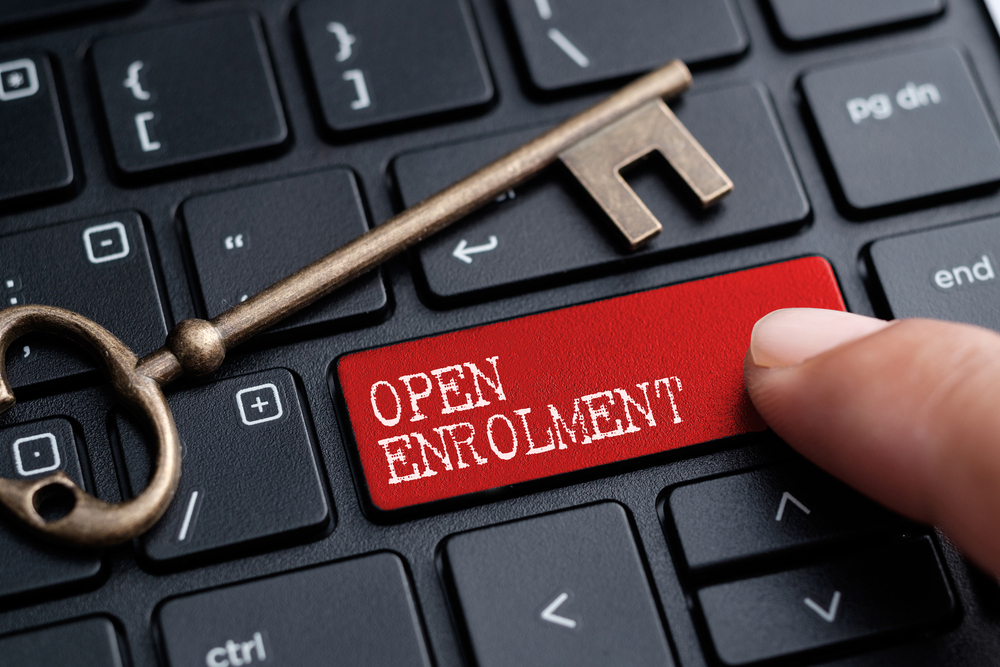For most of 2020, employers and employees alike have been focused on health, health care, and healthcare coverage. And while these topics will still be very much top of mind this enrollment season, employers have a unique opportunity to shift the focus to their employees themselves.

Open enrollment season already looks vastly different from previous years as employers ramp up online communications to ensure employees, both remote and in person, have access to the information they need. This tactical approach should be buttressed by an understanding that employees—more than ever—are likely dealing with pressures outside of their work lives. The simpler and more straightforward open enrollment is, the better employers can support and minimize stress for employees.
As employers put the final touches on their open enrollment processes, they should prioritize ways to make employees feel seen; heard; and, most importantly, informed. By embracing three considerations, employers can provide critical support while sharing the information employees need to make smart healthcare decisions for themselves and their families.
Provide Personalized Support
It’s always been true that employees need to understand their benefits options to get the best care for themselves and their family. This year, this is even more important, especially as so many have been affected—either directly or indirectly—by COVID-19.
Employees have more than ever to consider as they make their choices: Many are grappling with delayed vaccinations and other preventive care, with rescheduling postponed elective procedures, or even with the short- and long-term side effects of COVID-19 recovery. And, if an employee or his or her family member had the virus, he or she needs to prepare for potential serious health issues, such as the onset of diabetes and liver, heart, and lung problems, especially in terms of financial planning.
It’s important employees be aware that they may need to choose new providers this enrollment season, as well. Many small hospitals have closed; large hospitals have purchased smaller, independent medical practices; and many individual providers have chosen to retire due to lost revenue during the shutdown.
As such, employers should encourage their employees to confirm that their providers—especially those they might not see regularly—are still in business and still in their network (if applicable). If an employee’s preferred in-network providers are no longer available, certain plans such as health maintenance organizations (HMOs) or exclusive provider organizations (EPOs) may no longer make sense.
Knowing how expensive out-of-network bills are, employees need to make sure their plan and network cover providers in their area so the emergency room doesn’t feel like the only choice. That way, they can avoid getting strapped with significant surprise medical bills when many are already facing financial uncertainty. Be sure to provide clear guidance on how employees can find network providers in their area.
That’s a lot for employees to be worried about this open enrollment season—and every employee is different. Employers should provide personalized support for employees during open enrollment so they feel comfortable asking questions about their unique, individual situations.
Group sessions and generic benefits education can’t possibly address all the nuances employees face—and with so many employees working remotely, these really aren’t an option this year. Personalized benefits education and telephonic enrollment support offering one-on-one conversations with experts can help ensure employees are aware of and understand ALL of the programs and plans available to them. This live support model gives employees the privacy and undivided attention they deserve and can help them feel more confident they are making the best healthcare choices for the next year.
Keep It Simple
In addition to providing personalized support, employers should revisit all open enrollment communications with health literacy—or the lack thereof—in mind. Employers can make a huge difference in employees’ experience by ensuring important information is easy to access, understand, and act upon. The more proactively and thoughtfully employers communicate, the less pressure employees will feel.
For instance, people need to receive a message several times before they remember it. Remember that employees are missing the convenience of in-person check-ins and quick discussions with colleagues in the office. But don’t let employees self-educate—or rely on friends, family, or coworkers for information on benefits and how to enroll. You want them to have current and accurate information specific to your plans in terms they can understand.
Rather than leaving employees to fill in the gaps, send communications before, during, and after open enrollment—from what’s new to details about all the plans and programs available to critical deadlines.
Part of empowering employees is making sure communications are digestible for everyone. Because 96% of Americans can’t define basic terms such as deductible, copay, coinsurance, and premium, employers should use easy-to-understand language—in other words, employers shouldn’t make employees Google healthcare terms when they could include a simple, clear definition upfront.
Finally, now more than ever, employees are looking to their employers for truthful, factual information. Don’t obscure crucial information with jargon or generalities, lest employees think they’re not being given the “real scoop.”
Encourage Employees to Share Feedback
Holding open enrollment during a pandemic is a first for employers and employees alike. The best way to know if employers are successfully meeting employees’ needs is to ask them directly. Giving employees the opportunity to share concerns, questions, and feedback about the open enrollment process shows their employers value them and their input.
Empowering employees in this manner is a great way to boost morale and is an effective way for employers to gain actionable insights about their programs. As employees work harder for longer hours and, in many cases, under stressful conditions given the current climate, feeling valued by their employer can make all the difference.
It’s critical, however, to not just ask but also take action on employee feedback—even if it’s to explain why that feedback cannot be acted upon and what other options were considered.
Employees should be the focus of all open enrollment planning, and even though open enrollment is right around the corner, it’s not too late to make some final adjustments. By taking small steps, employers can make sure employees are confident and clear on open enrollment, their options, and the impact of their health plan selection.

Kim Buckey is Vice President of Client Services at DirectPath, LLC, headquartered in Burlington, Massachusetts. The firm provides personalized benefits education, healthcare transparency, and tax-advantaged reimbursement plan administration to Fortune 1000 employers and keeps employers in compliance by producing summary plan descriptions, summaries of benefits and coverage, and related required communications.
Buckey is DirectPath’s key advisor and senior subject matter expert on new and evolving compliance issues that affect employers as a result of the Affordable Care Act. Buckey, who founded and directs the compliance communications team, works closely with sales, marketing, and product development to explore the potential impact on customer segments and develop new products and services to support current and anticipated needs.
Buckey has some 40 years of communications experience, 35 of which focus on the delivery of compliance communications for health/welfare and qualified (savings/pensions) plans. Buckey’s team provides strategy, review and analysis, content development, and management services, giving guidance on mandates like the required Summary of Benefits and Coverage (SBC).
